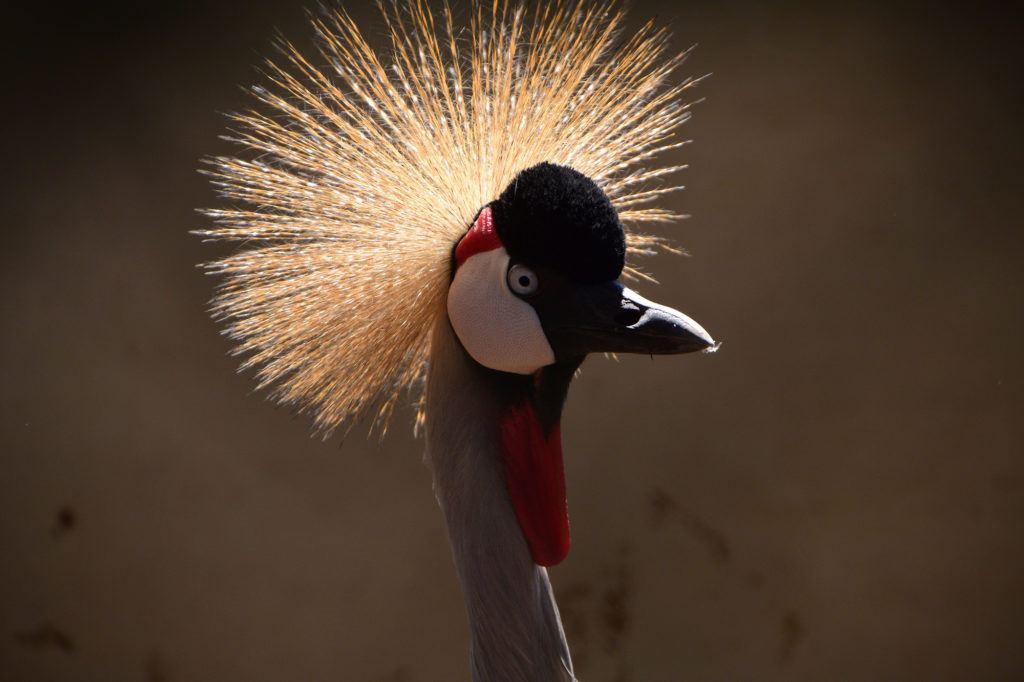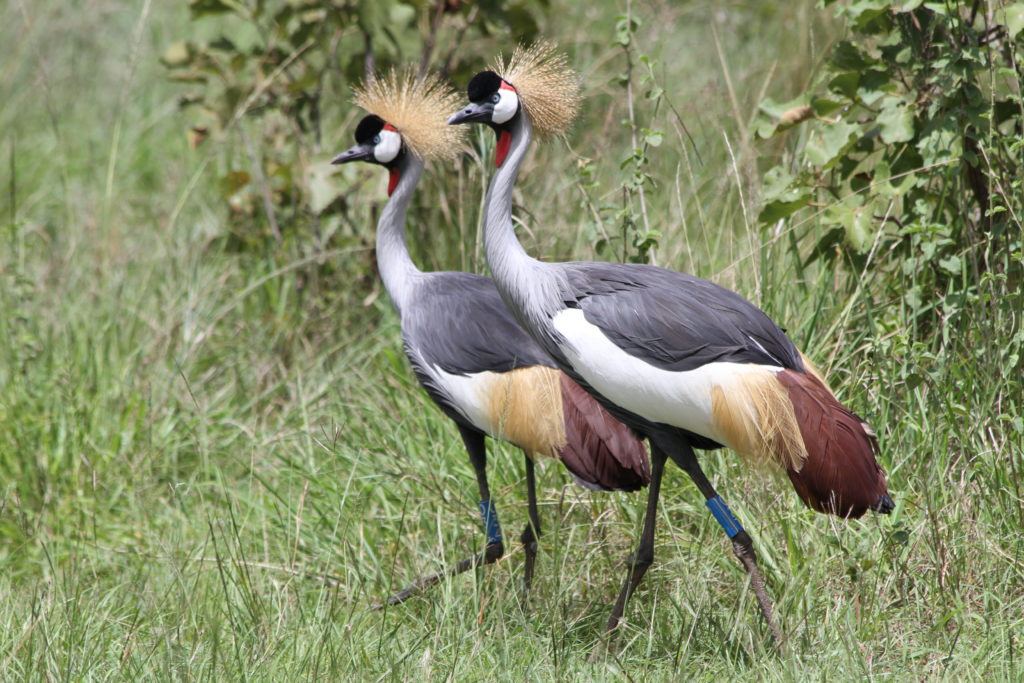In Rwanda’s wetlands, the cries of water birds fill the air as Community Conservation Officer for Rwanda Wildlife Conservation Association (RWCA) and WCN 2019 scholarship recipient Jean Ferus Niyomwungeri opens two large crates and steps back. A black and white head with red markings and a crown of golden feathers peers out. Cautiously, the tall, leggy bird, a grey crowned crane, exits the box and steps out onto the grass. Its head swivels left and right, taking in all the sights, sounds, and smells. A second crowned head appears; this crane quickly joins her mate. The pair make their way slowly but ever so elegantly to the water’s edge, joining a flock of about 70 grey crowned cranes with nests near the shore.
Jean and his team of volunteers smile. Rescuing and rehabilitating this wild-caught pair from captivity has been challenging, but moments like these are what make it all worth it. Having already fitted the rescued cranes with GPS tags, Jean will monitor their movements within Rwanda and across its borders, to better understand their movement patterns, and help design conservation strategies and actions to protect these endangered birds. Jean wants to see all grey crowned cranes protected and living in the wild. And he knows this will take an extraordinary amount of work.
“I have seen too many grey crowned cranes poached, killed, or sold to people who keep them in captivity,” Jean said. “These threats have led to their rapid decline. If we don’t act now, they will become extinct in my country.”
With its crest of golden feathers, ruffling gray plumage, multicolored wings, and bright red throat pouch, the grey crowned crane is one of Africa’s most iconic birds. Unfortunately, as a symbol of wealth and longevity in the Rwandan culture, they are kept in captivity by hotels and individuals, where they are usually stressed and malnourished, with wings broken to keep them from flying. They are the national bird of Uganda, featured on the flag and coat of arms. About 3 feet tall, their 6.5-foot wingspan and prehensile toes allow them to roost in trees, avoiding many predators. These monogamous cranes begin their life partnerships with a dramatic courtship display that includes dancing, jumping, and bowing. They often forage near grazing mammals like elephants, antelopes, and gazelles, which flush insects out of the grass as they move.
Humans pose the greatest threat to grey crowned cranes, through hunting, live capture and egg collection for commercial trade, habitat loss and degradation from livestock overgrazing and wetland drainage, and more. Grey crowned cranes spend most of their time in wetlands and grasslands, with a range stretching from southeastern South Africa to the eastern Democratic Republic of Congo, Kenya, and Uganda.
As RWCA’s Community Conservation Officer, Jean coordinates all outreach activities for community engagement, education, and livelihood programs, including a team of 25 rangers patrolling Rugezi marsh; youth environmental clubs and school campaigns; habitat restoration, including large-scale tree-planting events; and developing a nature reserve for disabled grey crowned cranes.
Upon earning his MSc in Biodiversity Conservation and Natural Resources Management at the University of Rwanda, Jean aims to expand his expertise and skillset and employ new strategies to his conservation work for grey crowned cranes, with community engagement at the core.




